Genre: Hack-‘n-Slash Developer: Sega AM1 Publisher: Sega Enterprises Players: 1-4 Released: 1992
As one of the most beloved franchises in Sega’s catalogue, Golden Axe has a place of honor among fans everywhere. It’s appeared on every Sega console in some form or another and continued beyond Sega’s transition from hardware with first the poorly-received Beast Rider in 2008 and a new installment recently announced for modern platforms. The series has remained quite diverse, spanning everything from hack-‘n-slashers to action/RPGs and even tournament fighting.
Its origins lie in the arcade, however, and save for the original 1988 classic, its heroes have only brandished their weapons on two other occasions, both on the Genesis. These three games present a sort of separate trilogy from what we’ve played elsewhere, with 1992’s Revenge of Death Adder marking the franchise’s return to coin-op and the resurrection of its dreaded main villain and 1995’s The Duel finishing him off. Well… maybe. Who knows what’s canon and what isn’t as characters die and revive more often than the X-Men. The Duel later brought the franchise into the fighting genre and multiple spinoffs went in different directions, but Revenge of Death Adder brought back the classic hack-‘n-slash style with a fresh cast of characters and a revitalized gameplay experience. It stayed true to its roots, boosted the challenge, and introduced new elements that breathed life into the familiar arcade formula.
One notable departure from its predecessors was the introduction of four new protagonists, replacing the iconic trio of Ax Battler, Gilius Thunderhead, and Tyrus Flare. Stern, a barbarian reminiscent of Ax Battler, led the charge with his muscular physique and powerful sword strikes. Joining him were the impish Trix armed with a pitchfork, the towering giant Goan, and the centaur Dora, offering a diverse range of playstyles and aesthetics. There was never any reason given as to why the original cast didn’t appear or what connection these new heroes had to Death Adder, but that’s just another example of how Golden Axe never tried too hard to sell you a story; hacking and slashing everything that moved was the important thing. In that regard, Revenge of Death Adder excelled at its job.
The core gameplay remained faithful to the Golden Axe legacy, with players engaging in relentless combat against hordes of enemies. However, Sega ramped up the difficulty, to keep players constantly challenged as they navigated through waves of foes. The addition of group attacks from multiple enemies added a layer of complexity beyond what we saw in the Genesis trilogy (Golden Axe III did spice things up a bit, but to be fair, it was released shortly after Revenge of Death Adder shipped), requiring players to adapt quickly or be overwhelmed, especially when playing alone. It was possible to be cornered and hit just as one got up, leaving no chance for a counterattack or to move out of the way, which could be frustrating.
Just as before, players could ride various beasts into battle if they wanted an advantage over the enemy horde, like scorpions and praying mantises, each offering its own advantages and disadvantages. While providing new gameplay opportunities, their effectiveness was varied, and I’m sure that I wasn’t the only one disappointed by the absence of the iconic dragons from the first game. I loved shooting fireballs from across the screen at charging enemies, and the skeletal dragon’s fiery spitball or little catapult just never hit the same for me.
Visually, some people weren’t impressed with the how Revenge of Death Adder used the System 32 board. I disagree, for the most part. Though I would have liked more parallax and life in the backgrounds, which were far too static and lifeless, I think the game turned heads with its stunning large character sprites and attention to detail. The System 32 board allowed for fluid character movements and elaborate attack animations, elevating the combat experience beyond what the original game had, though its combat move set was perhaps not as deep as Golden Axe 3. There were also several pseudo-3D stages that had massive boulders scrolling towards the screen, a neat effect that was pretty impressive at the time.
One thing Golden Axe is known for is its great magical effects, and this sequel did not disappoint. The special attacks in Revenge of Death Adder were awesome to see, rendered with graphic detail and delivering visceral satisfaction as enemies met their demise in spectacular fashion (who doesn’t enjoy watching their foes’ faces melt?). As far as gameplay goes, I think the magic system was one of the standout features of Revenge of Death Adder, which brought more depth and strategy to the gameplay then previous games had tried to do. As before, collecting magic pots scattered throughout the game allowed players to unleash devastating attacks, but this time some characters could also heal their allies, adding an extra layer of tactical decision-making. I’m sure this ability is what made Trix the go-to character for many players.
And what would all those great effects be without some blood-curdling screams to go with them? Revenge of Death Adder didn’t skimp on the meaty attack sounds and satisfying death cries. It shouldn’t be surprising that the game sounded better than Golden Axe 2, for example; no “blahs” here! The medieval-inspired music was a standout for me, setting the tone for some epic fighting. The soundtrack by Tomoyuki Kawamura and Masanori Takeuchi had a great fantasy flair to it, often reminding me of Conan the Barbarian, which was the effect Sega AM1 was probably aiming for.
After playing the original trilogy on the Genesis, it’s fair to note that Revenge of Death Adder didn’t really try anything new. Honestly, I’m not sure if it had to. Just being able to play a hack-‘n’-slash Golden Axe game in arcades again was enough for me, but I will concede that Sega played it safe with its design. More frustrating was the fact that Sega left it stranded in arcades at a time when every coin-op seemed to come home. Saturn fans desperately waited for Sega to port Revenge of Death Adder to Saturn, a move that seemed fundamental. Instead, we got The Duel and had to wait until 2020 for the chance to play the game at home on Sega’s wonderful Astro City Mini console along with the first Golden Axe. Sadly, that version only supports two players, so there remains no true and legal way to enjoy Revenge of Death Adder in all its four-player glory.
Overall, Golden Axe: Revenge of Death Adder remains a worthy successor to the legendary franchise. With its engaging combat, stunning visuals, and strategic depth, it offers a thrilling experience that will still delight longtime fans and entice newcomers. It’s worth buying an Astro City Mini for this game alone, and Golden Axe fans have to own it in some form. It’s just that good.
SCORE: 9 out of 10

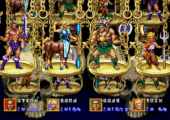
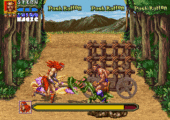
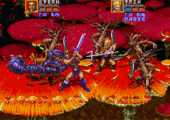
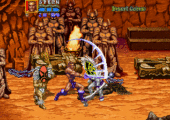
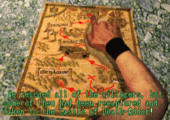
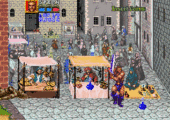
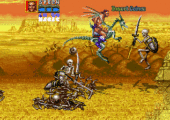


You could “legally” play this game four players on the Sega/Golden Axe: The Revenge of Death Adder Arcade 1Up cabinet. That of which is the best way to experience at home, excluding either owning the actual PCB/machine to the game, along with emulation for that matter.